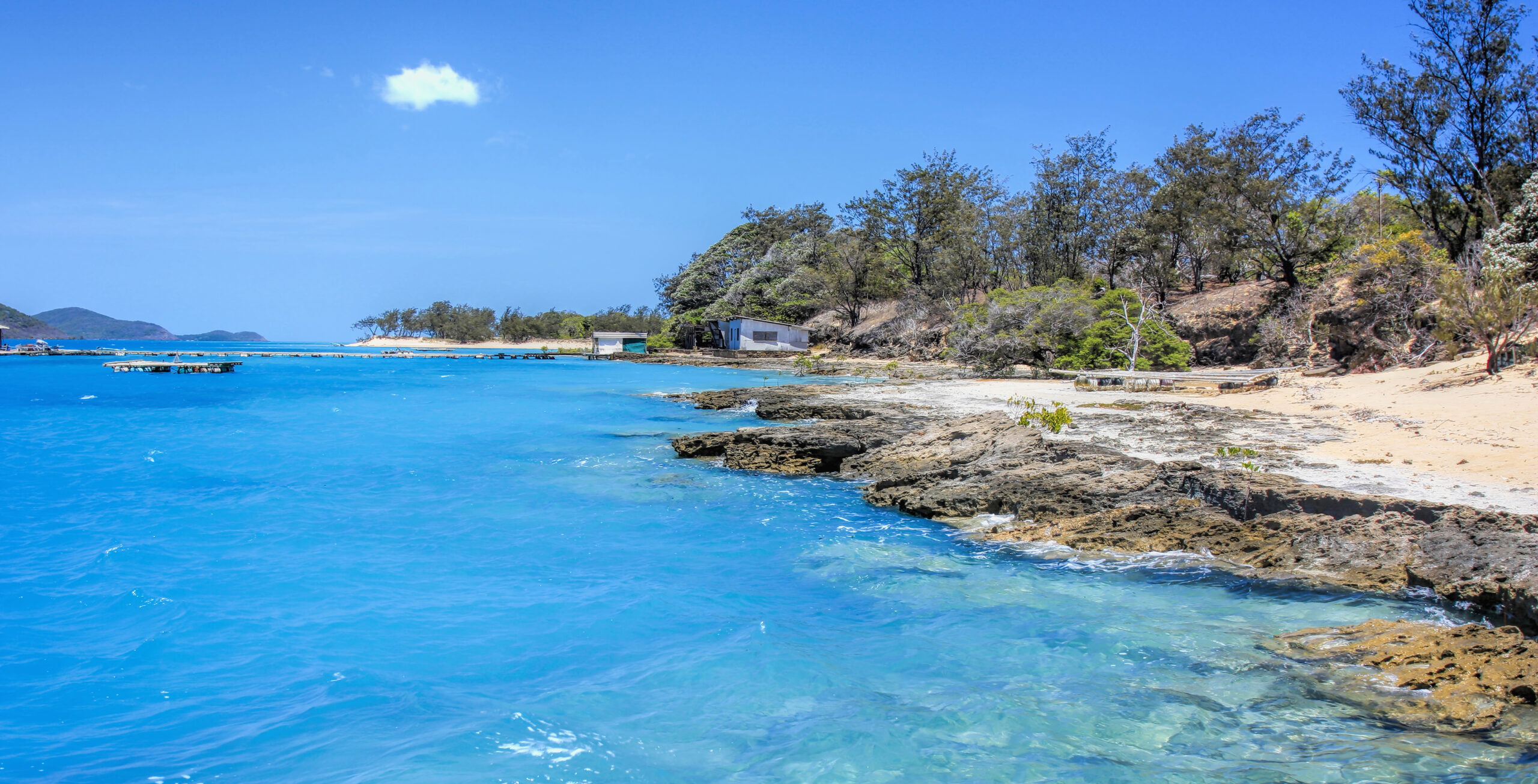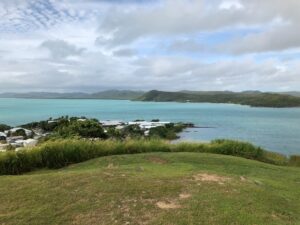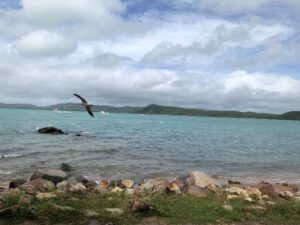Torres Strait Islander Leadership – beginning a conversation with communities
7 July 2019
● News and media
The Torres Strait Islands are a unique and beautiful part of Australia, spanning the strait between Cape York Peninsula and Papua New Guinea. They comprise some 274 islands rich in history, and distinct cultures and traditions. While many people know the Torres Strait as the home of Eddie Mabo (of the decisive Mabo case that overturned terra nullius), not everyone would know of the diversity of the region and its profound examples of multiculturalism, religious tolerance and the unique forms of leadership forged in this place of islands and its saltwater peoples.
Earlier this year, Samantha Faulkner, a Torres Strait Islander and Aboriginal woman from the Wuthuthi/Yadhaigana peoples, Cape York Peninsula and Badu and Moa Islands, and Catherine Althaus, ANZSOG Deputy Dean (Teaching and Learning), travelled to Horn and Thursday Islands to discuss local community interest in initiating a project that explores and celebrates unique aspects of Torres Strait Islander leadership.
According to the 2016 Census, there are 4514 people living in the Torres Strait Islands with Aboriginal and/or Torres Strait Islander peoples making up 92% of this population. The Census also indicated that there are 32,100 Torres Strait Islander peoples living throughout Australia, with 11% in the Torres Strait, 41% in other parts of Queensland, and the remaining 48% across the rest of Australia.
“Their individual passion for Indigenous public service leadership has led to their shared connection and belief about the distinctiveness of leadership practices unique to the Torres Strait Islands,” Associate Professor Althaus said.
“This special something is not confined to public service activities but extends across communities throughout the region.”

This is a point endorsed by Torres Strait Islander DFAT leader Leilani Bin-Juda. Ms Bin-Juda, who presented at ANZSOG’s Reimagining Public Administration conference earlier this year, believes the Torres Strait provides an important litmus test as to how to commit to culture and to community leadership.
Ms Bin-Juda also noted the relevance of DFAT’s work in the Torres Strait, which has a particular focus on resolving local issues with First Peoples and the implementation of a Treaty. Associate Professor Althaus said there is much to gain by embracing the varied and distinctive tapestry of leadership practices across the different First Nations that steward the country.“While it is easy to see points of robust similarity across the experiences of First Peoples – not only across Australia but also globally – each Nation governs with its own unique traditions and history, thus leading to different forms of First Peoples leadership,” Associate Professor Althaus said.
“The Torres Strait Islands are no different. We just want to be sure to follow the community’s lead on what it wants to share with the world and how it wishes to do so.”

Associate Professor Althaus’ experiences were informed by discussions with Queensland Indigenous public servants as part of her recently published book about Canadian and Australian Indigenous public service leadership, written with research collaborator Ciaran O’Faircheallaigh from Griffith University: ‘Leading from Between: Indigenous Participation and Leadership in the Public Service’.
Following Indigenous research methodology, Associate Professor Althaus and Ms Faulkner began their Torres Strait Islands trip by turning to community members to immerse themselves in relationality, begin discussions on reciprocity and potential benefits to what the community would like to achieve out of any research, and ways in which to genuinely prioritise respect. Ms Faulkner, an acclaimed author and poet was, for part of her trip, speaking with award-winning Aboriginal author and commentator Anita Heiss, Kerry Kilner, and Emily McConochie as part of a project with local teachers and Black Words, based at the University of Queensland.
Ms Faulkner recently completed a secondment to the Centre for Aboriginal Economic Policy Research from the Australian Public Service (National Health and Medical Research Council) where she published an important ANU report with Julie Lahn entitled ‘Navigating to Senior Leadership in the Australian Public Service: Identifying barriers and enablers for Aboriginal and Torres Strait Islander people in APS employment’.

The trip also included an exploration of the local cultural centre Gab Titui, visiting the Kazu pearl farm on Friday Island, and paying respects at the local cemetery to honour those who have gone before including Bernard Namok, the designer of the Torres Strait Islander flag.
Associate Professor Althaus said she also enjoyed the hospitality of residents and meeting people “fiercely proud of their home, attentive to protocol and respect, keenly outwards focused in their engagement with the world and combined with a deadly sense of humour”.
The recurring motif of the ‘dhari’, the traditional headdress of the Torres Strait Islands, provided a memorable reminder of a key aspect of Indigenous leadership, particularly that of the Torres Strait Islands who are renowned for their warrior status. Noah Riseman in his book In Defence of Country: Life Stories of Aboriginal and Torres Strait Islander Servicemen & Women states unequivocally how: “Aboriginal and Torres Strait Islander people have been protecting country since time immemorial”.
This protection extends beyond land to deliberately embrace the ocean, reefs and seas that are the lifeblood of the Torres Strait.
Anyone interested in participating in research on Torres Strait Islander leadership, please contact Catherine Althaus on c.althaus@anzsog.edu.au au or Samantha Faulkner on samantha.faulkner@anu.edu.au.
Further resources
Sign up to ANZSOG’s Indigenous news mailing list for new stories and upcoming events
Find out more about ANZSOG’s Indigenous engagement
Search APO’s First Peoples & Public Policy Collection, bringing together diverse, policy-relevant resources from the existing APO repository as well as new materials
